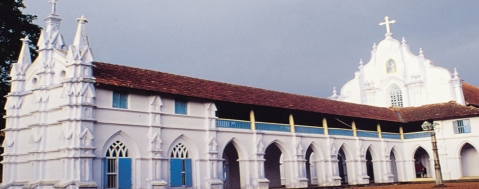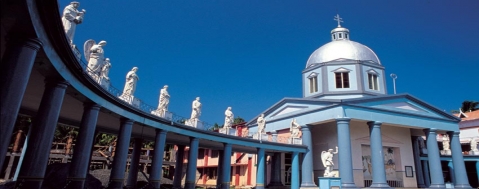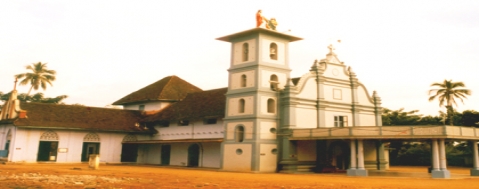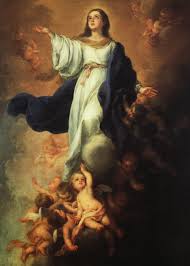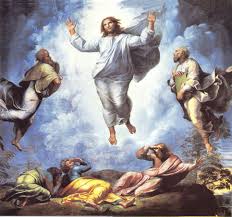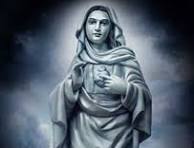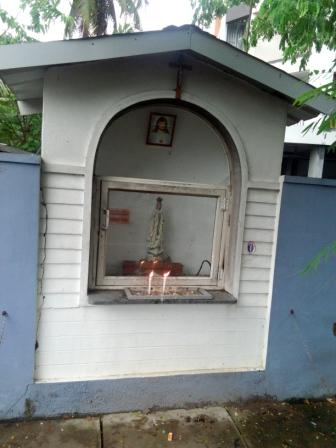THOUGHTS FOR THE MONTH: JANUARY- 2026:
\r\nGOD’S ALL PERVADING PRESENCE:
\r\n“From one man God created all races of humankind, to live throughout the whole earth, that they might seek Him, and by feeling their way towards Him, find Him. Truly He is not far from us; we live and move in Him, and have our being in Him.” Acts: 17: 26-28:
\r\n“All this that we see in this great universe is enveloped and permeated by God. Renounce it that you may enjoy whatever is given by Him. Harbor not any greed in your heart, for the wealth of this world is not your own.
\r\nThe whole universe is His. You must renounce the world because it is not yours. You must enjoy and work in it because it is His, and work with Him towards the removal of evil.
\r\nEvil is a great mystery and none can pierce it…. God Himself has no evil; He remains untouched by it. We know too that we shall never see God, unless we wrestle with and against evil, even at the cost of our lives. ” Isha Upanishad:I:
\r\n“We are fortified in our humble experience. The purer we try to become, the nearer we feel towards God. How much closer to God shall we be, when our faith is not simply in word or speech, but in deed and in truth; and immovable as the Himalayas, as white and bright as the snow of its peaks!” Mahatma Gandhi. (From Prayer with the harp of the Spirit: Vol: I)
SAINTS/ SAGES/ EVENTS: JANUARY- 2026:
\r\nJan 01. Blessed Virgin Mary- Mother of God: The Church has long taught that Mary is truly the Mother of God. St. Paul observed that “God sent His Son, born of a woman,\" expressing the union of the human and the divine in Christ. As Christ possesses two natures, human and divine, Mary was the Mother of God in his human nature. This special role of Mary in salvation history is clearly depicted in the Gospel in which she is seen constantly at her son’s side during his stereological mission. Because of this role exemplified by her acceptance of Christ into her womb, her offering of him to God at the Temple, her urging him to perform his first miracle, and her standing at the foot of the Cross at Calvary Mary was joined fully in the sacrifice by Christ of himself.
\r\nJan 02. St. Basil the Great: (329-379): He was the Greek bishop of Caesarea Mazaca in Cappadocia, Asia Minor (modern-day Turkey). He was an influential theologian who supported the Nicene Creed and opposed the heresies of the early Christian church, fighting against both Arianism and the followers of Apollinaris of Laodicea. His ability to balance his theological convictions with his political connections made Basil a powerful advocate for the Nicene position.. The Eastern Orthodox Church and Eastern Catholic Churches have given him, together with Gregory of Nazianzus and John Chrysostom, the title of Great Hierarch. He is recognised as a Doctor of the Church in both Eastern Orthodoxy and in the Roman Catholic Church. He is sometimes referred to by the epithet \"Ουρανοφαντωρ\", \"revealer of heavenly mysteries\".
\r\nToday is also the feast day St. Gregory Nazianzus: (329-390): He was a 4th-century Archbishop of Constantinople. He is widely considered the most accomplished rhetorical stylist of the patristic age. Gregory made a significant impact on the shape of Trinitarian theology among both Greek- and Latin-speaking theologians, and he is remembered as the \"Trinitarian Theologian\". Much of his theological work continues to influence modern theologians, especially in regard to the relationship among the three Persons of the Trinity. Along with the brothers Basil the Great and Gregory of Nyssa, he is known as one of the Cappadocia Fathers.
\r\nJan 03. St. Genevieve: (419-512): She is the patron saint of Paris. In 451 she led a \"prayer marathon\" that was said to have saved Paris by diverting Attila\'s Huns away from the city. When Childeric I besieged the city in 464 and conquered it, she acted as an intermediary between the city and its conqueror, collecting food and convincing Childeric to release his prisoners.
\r\nToday is also the feast day of St. Kuriakose Elias Chavara: (1805-1871): “Father Kuriakose Elias Chavara was born here in Kerala, and for nearly all of his sixty-five years of earthly life he laboured generously for the renewal and enrichment of the Christian life. His deep love for Christ filled him with apostolic zeal and made him especially careful to promote the unity of the Church. With great generosity he collaborated with others, especially brother priests and religious, in the work of salvation.” Bl. Pope John Paul II.
\r\nJan 04. St. Elizabeth Anne Seton: (1774-1821): She was the first native-born citizen of the United States to be canonized by the Roman Catholic Church (September 14, 1975). She established the first Catholic school in the nation, at Emmitsburg, Maryland, where she founded the first American congregation of Religious Sisters, the Sisters of Charity.
\r\nJan 05. Feast of Epiphany: The Epiphany takes its name from the Greek epiphania, which denotes the visit of a god to earth. The first idea of the feast is the manifestation of Christ as the Son of God, as prophesied. A second important idea in Epiphany is the extension of Christ\'s kingship to the whole world. The revelation of Christ to the three kings at Bethlehem is a symbol of His revelation to the whole of the Gentile world. Closely linked to both these themes of divine manifestation and world kingship is a third idea running through the Epiphany feast: that of light. \"The Gentiles shall walk in Thy light, and kings in the brightness of Thy rising.\"
\r\nToday is also the feast day of St. John Neuman: (1811-1860): He was a native of Bohemia who emigrated to the United States where he became a Redemptorist Catholic priest and the fourth Bishop of Philadelphia (1852–60). He is the first American bishop (and thus far the only male citizen) to be canonized. While being the bishop of Philadelphia, Neumann founded the first Catholic diocesan school system in the United States.
\r\nJan 06. St. Andre Besette: (1845-1937): He was a lay brother of the Congregation of Holy Cross and a significant figure of the Roman Catholic Church among French-Canadians, credited with thousands of reported miraculous healings. He was declared venerable in 1978 and was beatified by Pope John Paul II in 1982. Pope Benedict XVI canonized him on October 17, 2010. His great confidence in Saint Joseph inspired him to recommend this saint\'s devotion to all those who were afflicted in various ways. On his many visits to the sick in their homes, he would rub the sick person lightly with oil taken from a lamp burning in the college chapel and recommend them in prayer to St. Joseph. People claimed that they had been cured through the prayers of the good Brother and Saint Joseph, and they were grateful their prayers had been heard.
\r\nJan 07. St. Raymond of Pennafort: (1175-1275): He was a Catalan Dominican friar in the 13th-century, who compiled the Decrials of Gregory IX, a collection of canon laws that remained a major part of Church law until the 20th century. He is honored as a saint in the Catholic Church and is the patron saint of lawyers, especially canon lawyers.
\r\nJan 08. St. Thorfinn: (Died in 1285): He was the Bishop of the Ancient Diocese of Hamar in medieval Norway. Walter de Muda, one of the monks at Ter Doest at the time, wrote a poem praising the character of Thorfinn. His mild exterior covered a firm will against whatever he esteemed to be evil and ungodly. Father Walter had written the poem about him after his death and hung it up over his tomb.
\r\nJan 09. St. Adrian the Abbot: (Died in 710): He was a famous scholar and the Abbot of St Augustine\'s Abbey in Canterbury in the English county of Kent.
\r\nJan 10. St. William of Bourges: (1155-1209): He was Archbishop of Bourges from 1200 until 1209. Witnesses claimed that he performed eighteen miracles during his saintly life and that he performed another eighteen miracles after his death. He is a patron saint of the University of Paris.
\r\nJan 11. St. Theodocius the Cenobiarch: (423-529): was a monk, abbot, and saint who was a founder and organizer of the cenobite way of monastic life.
\r\nJan 12. The Baptism of Jesus: The Baptism of Jesus marks the beginning of his public ministry. This event is recorded in the canonical gospels of Matthew, Mark and Luke.
\r\nToday is also the feast day of St. Marguerite de Bourgeoys, who founded the Congregation of Notre Dame of Montreal in the colony of New France, now part of Canada.
\r\nJan 13. St. Hilary of Poitiers: (300-368): He was Bishop of Poitiers and is a Doctor of the Church. He was sometimes referred to as the \"Hammer of the Arians\" (Latin: Malleus Arianorum) and the \"Athanasius of the West.\" His name comes from the Latin word for happy or cheerful.
\r\nJan 14. St. Felix of Nola: (Martyred in 251): He was arrested and tortured for his Christian faith during the persecution of the Roman emperor Decius (r. 249-51). He was believed to have died a martyr\'s death during the persecution of Decius or Valentinian.
\r\nJan 15. St. Arnold Jansen S.V.D: (1837-1907): He was a Roman Catholic priest and missionary, and was canonized in 2003 by Pope John Paul II. He is best known for founding the Society of the Divine Word, a Roman Catholic missionary religious congregation, also known as the Divine Word Missionaries, as well as two congregations for women.
\r\nJan 16. Bl. Joseph Vaz: (1651-1711): He was a Catholic Oratorian priest from Goa. He is known as the \'Apostle of Ceylon\'. On 21 January 1995, he was beatified by Pope John Paul II in Colombo. Fr. Vaz entered Ceylon (now Sri Lanka) during the Dutch occupation, when Calvinism was the official religion. He travelled throughout the island bringing the Eucharist and the sacraments to clandestine groups of Catholics. Later in his mission, he found shelter in the Kingdom of Kandy where he was able to work freely. At the time of his death, Fr. Vaz managed to rebuild the Catholic Church on the island.
\r\nJan 17. St. Anthony of Egypt: (251-356): He was a Christian saint from Egypt, a prominent leader among the Desert Fathers. Saint Athanasius, who knew Anthony and wrote his biography, said, \"Anthony was not known for his writings nor for his worldly wisdom, nor for any art, but simply for his reverence toward God.” Anthony died when he was one hundred and five years old. A life of solitude, fasting, and manual labor in the service of God had left him a healthy, vigorous man until very late in life. And he never stopped challenging himself to go one step beyond in his faith.
\r\nJan 18. St. Margret of Hungary: (1242-1271): She was a Dominican nun and the daughter of King Bela IV of Hungary. She was the younger sister of St. Kinga of Poland (Kunegunda) and the Bl. Yolanda of Poland and through her father, the niece of the famed St. Elizabeth of Hungary.
\r\nJan 19. St. Fillan: St. Fillan of Munster, the son of Feriach, grandson of Cellach Cualann, King of Leinster, received the monastic habit in the Abbey of Saint Fintan Munnu and came to Scotland from Ireland in 717AD as a hermit along with his Irish princess-mother St. Kentigerna and his Irish prince-uncle St. Comgan. St. Fillan was the abbot of a monastery in Fife before retiring to Glen Dochart and Strathfillan near Tyndrum in Perthshire. St. Fillan was credited with powers such as the healing of the sick and also possessed a luminous glow from his left arm which he used to study and write Sacred Scriptures in the dark.
\r\nJan 20. St. Sebastian: (Martyred in 268): It is said that he was killed during the Roman emperor Diocletian\'s persecution of Christians. He is commonly depicted in art and literature tied to a post or tree and shot with arrows. This is the most common artistic depiction of Sebastian; however, according to legend, he was rescued and healed by Irene of Rome. Shortly afterwards he criticized Diocletian in person and as a result was clubbed to death. Saint Sebastian was venerated at Milan as early as the time of St. Ambrose and was buried on the Appian Way. He is patron of archers, athletes, and soldiers, and is appealed to for protection against plagues.
\r\nJan 21. St. Agnes: (291-304): According to tradition, Saint Agnes was a member of the Roman nobility born c. 291 and raised in a Christian family. She suffered martyrdom at the age of twelve or thirteen during the reign of the Roman Emperor Diocletian, on 21 January 304. Saint Agnes is the patron saint of young girls.
\r\nJan 22. Bl. William Joseph Chaminade: (1761-1850): He was a French Catholic priest who survived persecution during the French Revolution. He later founded the Society of Mary, usually called the Marianists, in 1817. Pope John Paul II beatified him on September 3, 2000.
\r\nJan 23. St. Marianne Cope: (1838-1913): She was a German-born American who was a member of the Sisters of Saint Francis of Syracuse, New York. Known for her charitable works and virtuous deeds, she spent many years caring for lepers on the island of Molokaʻi in Hawaiʻi. Despite direct contact with the patients over many years, Cope was not afflicted by the disease, considered by some faithful to be miraculous. She was beautified in 2005 and declared a saint by Pope Benedict XVI in 2012 along with Bl. Kateri Tekakwitha, the first Native American saint.
\r\nJan 24. St. Francis de Sales: (1567-1622): He was a Bishop of Geneva and is honored as a saint in the Roman Catholic Church. He became noted for his deep faith and his gentle approach to the religious divisions in his land resulting from the Protestant Reformation. He is known also for his writings on the topic of spiritual direction and spiritual formation, particularly the Introduction to the Devout Life and the Treatise on the Love of God. In 1923, Pope Pius XI proclaimed him a patron of writers and journalists. St. Francis developed a sign language in order to teach a deaf man about God. Because of this, he is the patron saint of the deaf.
\r\nJan 25. St. Peter Thomas: (1305-1366): Peter was born in Gascony, France and joined the Carmelites while still a young man. In 1342 he was appointed procurator of the order and, from Avignon, he oversaw the organization and government of the Carmelites. In 1363 he was appointed Archbishop of Crete and 1364 Latin Patriarch of Constantinople. He took part in a military operation against Alexandria, Egypt, in 1365 during which he was severely wounded. He died from his injuries at Cyprus a few months later.
\r\nJan 26. Indian Republic Day: In India, Republic Day honours the date on which The Constitution of India came into force–on 26 January 1950–replacing the Government of India Act (1935) as the governing document of India. It is one of three national holidays in India.
\r\nToday is the feast day of St. Timothy, the disciple of St. Paul. He was the first first-century Christian bishop of Ephesus, whom tradition relates died around the year AD 97. The New Testament indicates that Timothy traveled with Saint Paul. He is addressed as the recipient of the Epistles to Timothy.
\r\nJan 27. St. Sabas of Serbia: (1174-1236): He was a Serbian Prince and Orthodox monk, the first Archbishop of the autocephalous Serbian Church, the founder of Serbian law and literature, and a diplomat. In 1219 he was recognized as the first Archbishop of Serbs, by the Patriarch of Constantinople, and in the same year he authored the oldest known constitution of Serbia, Zakonopravilo, thus securing full independence; both religious and political. Sava heavily influenced Serbian medieval literature. The Cathedral of Saint Sava in Belgrade is dedicated to him, it was built on the scene where the Ottoman Turks allegedly burnt his remains in the 16th century, following an uprising in which the Serbs used icon depictions of Sava as their war flags; the cathedral is currently the largest Eastern Christian church building in the world.
\r\nJan 28. St. Thomas Aquinas: (1225-1274): He was the foremost classical proponent of natural theology, and the father of Thomism. His influence on Western thought is considerable, and much of modern philosophy was conceived in development or refutation of his ideas, particularly in the areas of ethics, natural law, metaphysics, and political theory. Thomas embraced several ideas put forward by Aristotle — whom he referred to as \"the Philosopher\" — and attempted to synthesize Aristotelian philosophy with the principles of Christianity. Also honored as a Doctor of the Church, Thomas is considered the Church\'s greatest theologian and philosopher.
\r\nJan 29. Bl. Boleslava Lament: (1862-1946): In the city of Bialystok in Poland, Blessed Mary Boleslava Lament, virgin, in the midst of political upheaval founded the Congregation of the Missionary Sisters of the Holy Family to promote Christian unity, help the poor and train the girls in Christian life. On June 5, 1991, Maria Boleslava Lament, was proclaimed blessed by Pope John Paul II in Bialystok, during his apostolic visit to Poland.
\r\nJan 30. Mahatma Gandhi: (1869-1948): Today is the 76th anniversary of Mahatma Gandhi’s martyrdom. Gandhi was the preeminent leader of Indian nationalism in British-ruled India. Employing non-violent civil disobedience, Gandhi led India to independence and inspired movements for civil rights and freedom across the world. “We may all be happy and grateful that destiny gifted us with such an enlightened contemporary, a role model for the generations to come. Generations to come will scarce believe that such a one as this walked the earth in flesh and blood.” Albert Einstein.
\r\nToday is also the feast day of St. Martina of Rome: (Martyred in 228): She was a Roman martyr under Emperor Alexander Severus. She is a patron saint of Rome.
\r\nJan 31. St. John Bosco: (1784- 1817): He was an Italian Roman Catholic priest of the Latin Church, educator and writer of the 19th century. While working in Turin, where the population suffered many of the effects of industrialization and urbanization, he dedicated his life to the betterment and education of street children, juvenile delinquents, and other disadvantaged youth. He developed teaching methods based on love rather than punishment, a method that became known as the Silesian Preventive System. A follower of the spirituality and philosophy of Saint Francis de Sales, Bosco dedicated his works to him when he founded the Salesians of Don Bosco, based in Turin. Bosco established a network of organizations and centres to carry on his work. Following his posthumous beatification in 1929, he was canonized as a saint in the Roman Catholic Church by Pope Pius XI in 1934.



